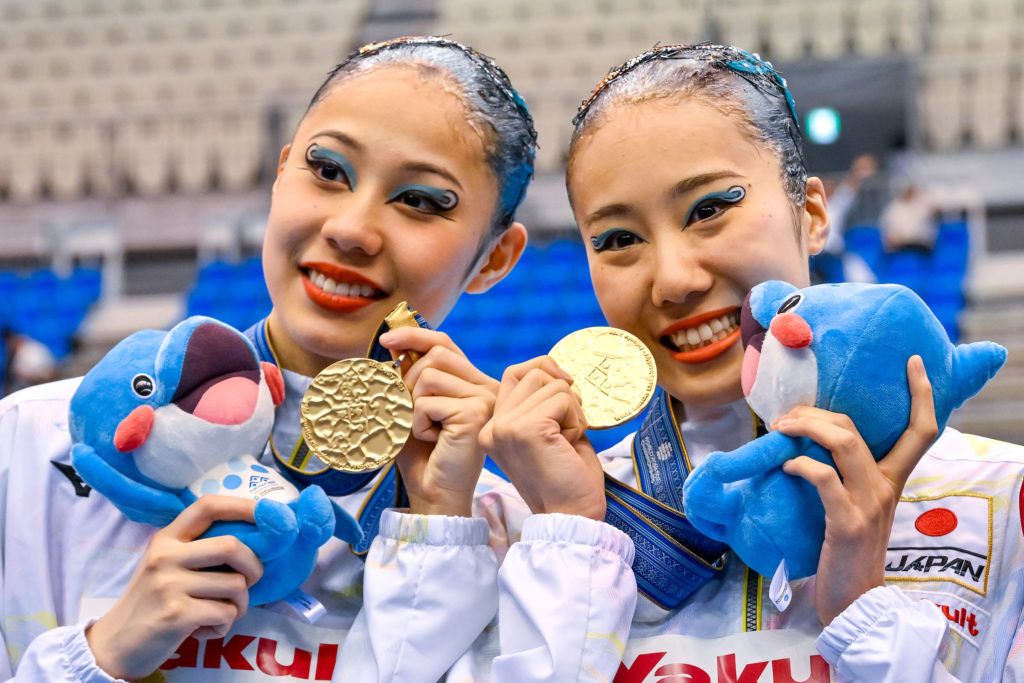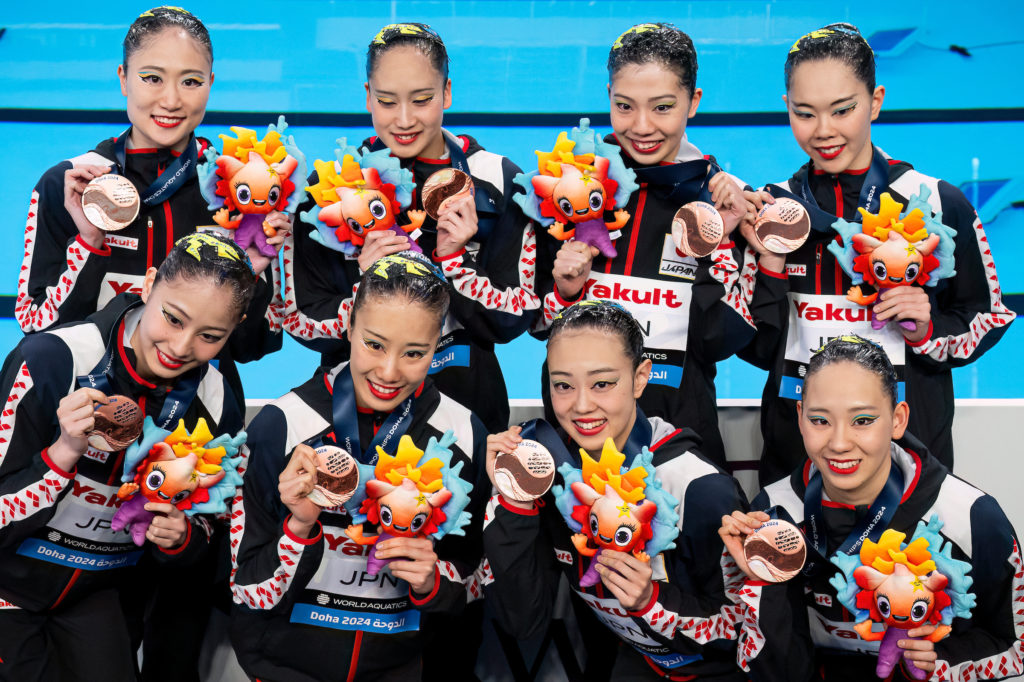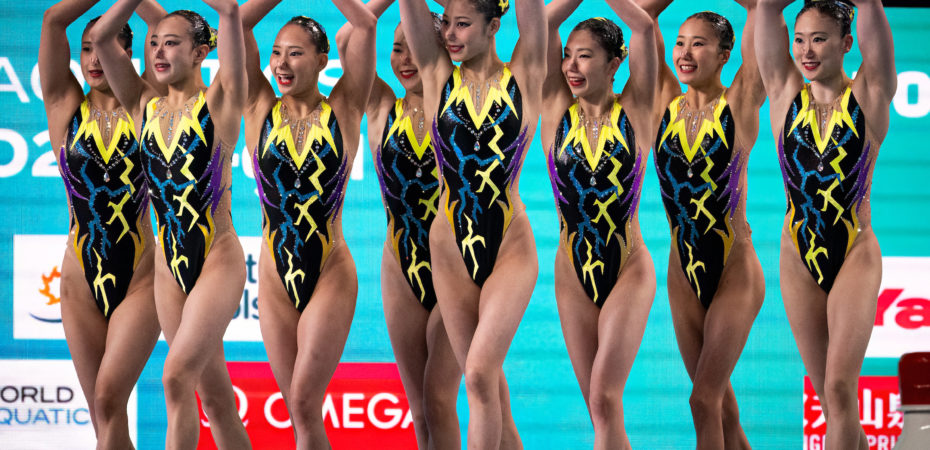The Japan Swimming Federation announced on May 10 the athletes who will compete in the Paris Olympic Games in artistic swimming. The eight-member, all-female squad includes three returning Tokyo Olympians and 16-year-old phenom Higa Moe, who will compete in all five events.
The eight athletes, plus one reserve, selected to represent Japan this summer are as follows:
- Higa Moe (16)
- Kijima Moeka (24)
- Kobayashi Uta (21)
- Sato Tomoka (22)
- Shimada Ayano (17)
- Wada Ami (20)
- Yasunaga Mashiro (24)
- Yoshida Megumu (28)
- Reserve: Fujii Moka (19)
Tokyo Olympian and veteran Yoshida Megumu will lead the squad in Paris as the team captain. Although she competed in both duet and team in Tokyo, she will this time only appear in the team routines. She is joined by fellow returning Olympians Yasunaga Mashiro and Kijima Moeka, whose experience will be invaluable this summer. All three have been part of Japan’s senior national team since 2018.
In the duet category, 24-year-old Yasunaga Mashiro and 16-year-old Higa Moe, World Champions in the technical routine in Fukuoka last year, have been selected to represent the nation. Sato Tomoka is the duet’s reserve. She was also a World Champion in 2023 in the mixed duet technical.
Editor’s note – Head coach Nakajima Takako announced on June 12 that duet was changed to Higa Moe and Sato Yotaro.

The youngest athlete on the squad, Higa Moe is one of artistic swimming’s rising stars. In 2022 and at only 14, she competed in all three categories (senior, junior, youth) for her first international season. That year, she became a World Youth Champion as well as a two-time World Junior Champion in the solo events. With the senior squad, she won silver in technical team and free combination, and bronze in free team at the Budapest World Championships. She was also already competing in duet at that time.
The following year, she added a fourth World title to her resume, her first on the senior stage, in the technical duet event. In Fukuoka, she also earned silver in free team, bronze in free duet and placed fourth in technical team.
Teammate Shimada Ayano, 17, only made her senior debut last year and has been extremely reliable and consistent ever since. Much like Higa, Shimada was tremendous in the junior category, and was a four-time World Junior Champion in 2022. Kobayashi Uta and Wada Ami are two other athletes who only joined Japan’s main senior squad ahead of the 2023 season, and after being sporadically part of the “B” team over the last few years.
Reserve Fujii Moka has competed in the last three World Championships, but has unfortunately been limited in her training due to lower back pain and a herniated disk.
All athletes named to this Olympic team recently competed at the Paris World Cup, helping Japan win gold in free team, as well as silver in acrobatic team and technical duet.
The most surprising omission is Yanagisawa Akane, a Tokyo Olympian who had been on the team through the Doha World Championships. Yanagisawa had not traveled with the team to France for the World Cup.

Photo: Deepbluemedia
The Japanese national team has been showing great results in the Olympic events under the new rules. In Fukuoka, the country won gold in technical duet, silver in free team, as well as bronze in free duet and acrobatic team.
A few months later, Japan earned silver in both duet and team at the Asian Games. At the Doha World Championships last February, the country clinched silver in free team and bronze in technical team all while securing its team quota to the Olympic Games.
The country placed fourth in both team and duet at the 2020 Tokyo Olympics, and will be aiming to win medals once again for the first time since the Rio de Janeiro Olympics in 2016.
Japan remains the only country to have appeared in every Olympic events since artistic (then-synchronized) swimming was included on the programme in 1984.
ARTICLE BY CHRISTINA MARMET
Cover photo: Giorgio Perottino / Deepbluemedia
If you’ve enjoyed our coverage, please consider donating to Inside Synchro! Any amount helps us run the site and travel costs to cover meets during the season.

